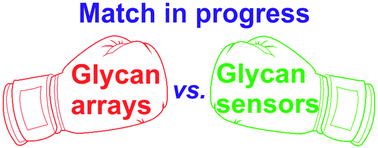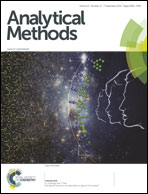Are glycan biosensors an alternative to glycan microarrays?
Abstract
Complex carbohydrates (glycans) play an important role in nature and study of their interaction with proteins or intact cells can be useful for understanding many physiological and pathological processes. Such interactions have been successfully interrogated in a highly parallel way using glycan microarrays, but this technique has some limitations. Thus, in recent years glycan biosensors in numerous progressive configurations have been developed offering distinct advantages compared to glycan microarrays. Thus, in this review advances achieved in the field of label-free glycan biosensors are discussed.


 Please wait while we load your content...
Please wait while we load your content...